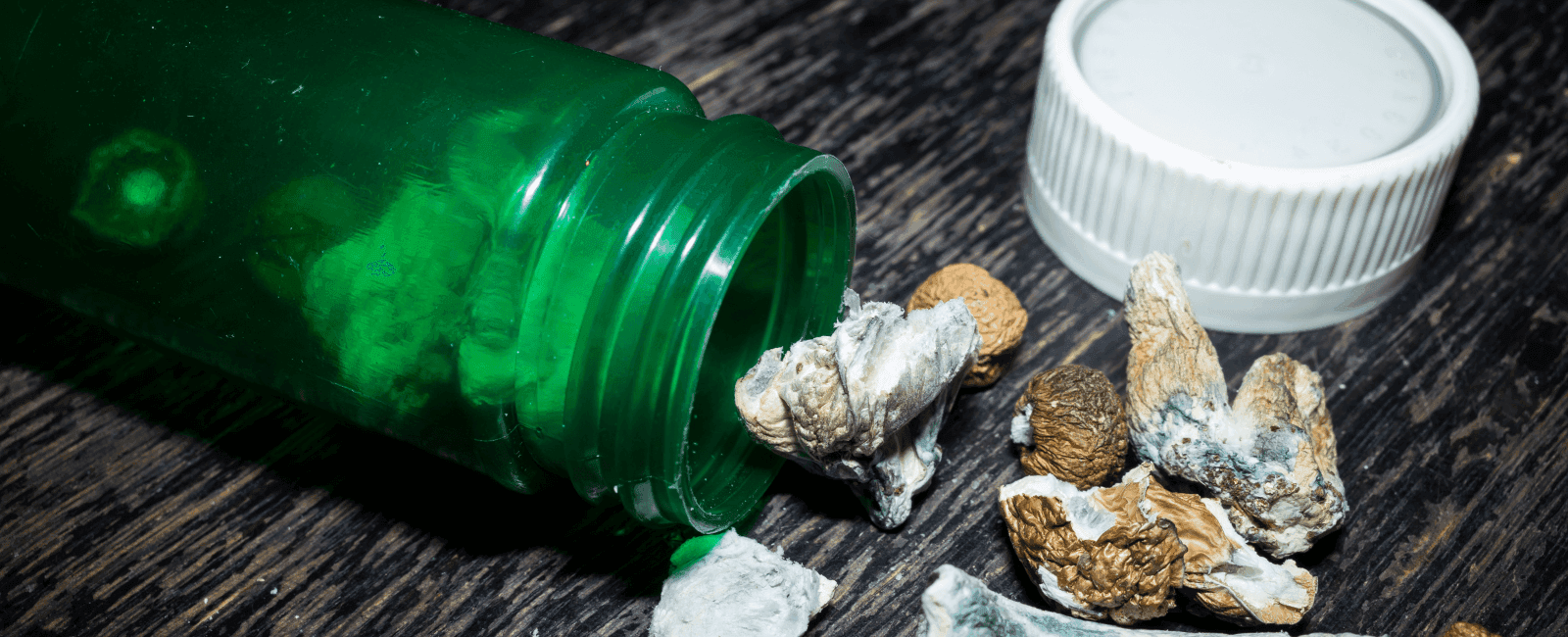

Over the past few years, psilocybin, the psychoactive compound in magic mushrooms, has gained more acceptance in both legal frameworks and scientific research. As a result, the substance has become more prevalent in media coverage due to its potential medical benefits. In various clinical trials, psilocybin has demonstrated a remarkable ability to treat multiple mental health conditions such as depression, anxiety, and post-traumatic stress disorder (PTSD). Studies have also uncovered psilocybin could possibly be used to help conditions like chronic pain and traumatic brain injuries.
Yet despite psilocybin’s growing legalization and decriminalization across several states and counties, there has been a significant increase in magic mushroom drug busts, according to a new study.
Trends in law enforcement seizures
Between 2017 and 2022, the amount of shrooms seized by law enforcement has more than tripled. Based on data collected from participating law enforcement agencies in High-Intensity Drug Trafficking Areas (HIDTAs), there were 4,526 magic mushroom seizures within the five-year time period. The number of these seizures in the US has increased by 328.9%, with 402 seizures occurring in 2017 compared to 1,396 in 2022.
The majority of these drug busts happened in the Midwest (36%), followed by the West (33.5%). Furthermore, the total weight of shrooms seized in the US increased by 2,749.7% in all four regions (1).
A surge of psychedelic use
In an interview with NPR, Joseph Palamar, an epidemiologist at NYU Langone Health and the main author of the study, believes that what “the results indicate is that shroom availability has likely been increasing.”
Recent research and survey data indicate an uptick in psychedelic consumption, including magic mushrooms. One 2022 study noted that psychedelic use has seen a historically high prevalence, primarily amongst individuals 26 years and older between 2002 and 2019 (2). Additionally, according to data from the Substance Abuse and Mental Health Administration, psilocybin is the most popular plant-based psychedelic in the US, with over 11% of people aged 12 and up reporting that they have used the drug.
While there is not enough data to fully determine the increased prevalence of psilocybin use, these national and regional trends in seizure data suggest that the accessibility and interest in psilocybin are on the rise. And although decriminalization efforts have eased penalties for users, distribution still poses legal risks. Because of the “increased demand for the drug…The sellers are able to sell the product because more people are using it,” says Dr. Nora Volkow, director of the National Institute on Drug Abuse (NIDA).
While some jurisdictions are moving towards more lenient psychedelic legislation, psilocybin is still considered a federally illegal Schedule I drug with ongoing prohibitions against its distribution and non-regulated use. The contradictory nature of the increasing acceptance of magic mushrooms and the continued rise in law enforcement seizures reflects a complex legal and social landscape requiring careful consideration for future outcomes.
Prevention efforts and harm reduction
The escalating shroom availability indicated by national survey data raises possible public health concerns that worry researchers reflect the complicated legal and social landscape regarding psychedelic substances. Psilocybin is deemed relatively safe when used in controlled, therapeutic settings and has low addiction potential, but the risk of adverse effects in unregulated environments cannot be ignored. Initial research into the negative impacts of psilocybin suggests the potential of psychosis and suicidal ideation, yet these outcomes are relatively rare in occurrence (3).
Because of these risks, the study’s results are “an important part of the bigger picture of where we are headed as a nation,” says Dr. Joshua Siegel of Washington University. “It’s important to understand what’s happening in terms of the health care side of things. It’s important to understand what’s happening recreationally and legally.”
Proponents of psychedelic reform argue that decriminalizing and legalizing substances like psilocybin could result in a safer and more regulated environment for their access, therefore mitigating the risks associated with their unregulated consumption. A regulatory framework governing the use and production of psilocybin could also pave the way for broader therapeutic applications and allow individuals access to psilocybin-assisted therapy within a controlled setting. Nonetheless, the progression toward psychedelic legislation will require a deliberate evaluation of how psilocybin can be assimilated into the healthcare infrastructure to ensure its availability to those who stand to gain from its therapeutic potential while simultaneously instituting measures to deter misuse. As this landscape continues to evolve, it will be important to balance the potential benefits of psilocybin with the need to ensure public safety and well-being.
References
- Bienemann, Bheatrix, Nina Stamato Ruschel, Maria Luiza Campos, Marco Aurélio Negreiros, and Daniel C. Mograbi. 2020. “Self-Reported Negative Outcomes of Psilocybin Users: A Quantitative Textual Analysis.” Edited by Giuseppe Carrà. PLOS ONE 15 (2): e0229067. https://doi.org/10.1371/journal.pone.0229067.
- Palamar, Joseph J., Nicole D. Fitzgerald, Thomas H. Carr, Caroline Rutherford, Katherine M. Keyes, and Linda B. Cottler. 2024. “National and Regional Trends in Seizures of Shrooms (Psilocybin) in the United States, 2017–2022.” Drug and Alcohol Dependence, February, 111086. https://doi.org/10.1016/j.drugalcdep.2024.111086.
- Walsh, Claire A., Ofir Livne, Dvora Shmulewitz, Malki Stohl, and Deborah S. Hasin. 2022. “Use of Plant-Based Hallucinogens and Dissociative Agents: U.S. Time Trends, 2002–2019.” Addictive Behaviors Reports 16 (December): 100454. https://doi.org/10.1016/j.abrep.2022.100454.


